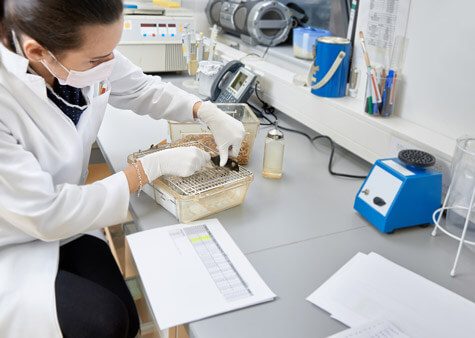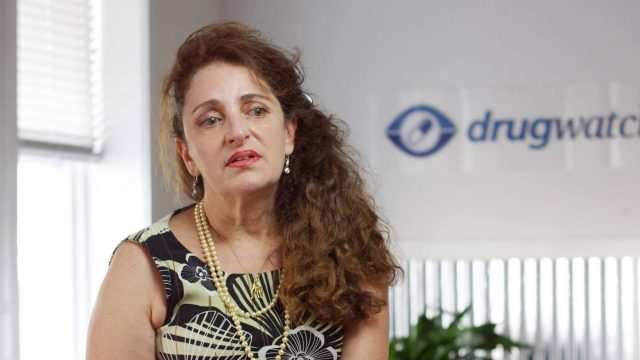FDA Approval Process
It’s hard to watch a half-hour television show these days without being inundated with advertisement after advertisement about the latest prescription drugs or medical devices and their abilities. But how can the average consumer be sure the drugs flashing across the screen in fact do what’s promised in their labels? That’s where the U.S. Food and Drug Administration — or FDA — comes in. The government regulatory agency within the U.S. Department of Health and Human Services controls the drug-approval process and is tasked with reviewing new drugs and medical devices before companies can sell them.
- Medically reviewed by Mireille Hobeika, Pharm.D.
- Last update: September 5, 2023
The FDA’s approval process has garnered many criticisms over the years. For one, generic drugs and devices often make it to market simply because the manufacturers can demonstrate they are similar to products that were approved in the past — even if those products have known safety concerns. Although some drugs may have safety concerns, they were approved based on the FDA’s determination that the benefits outweighed potential risks of the drug.
Contrary to what most people think, just because a drug or device is FDA-approved, it does not mean the product is guaranteed to be safe. In fact, manufacturers recall about 4,500 drugs and medical devices annually. While the FDA has efforts in place to minimize these safety risks, there are still occurrences where drugs or devices may come to market quickly and lead to safety concerns.
In November 2022, FDA reported about 55 medical device recalls in 2022, including thousands more Philips CPAP devices and CPAP masks. It also reported 59 drug recalls.
FDA Drug-Approval Process
A pharmaceutical company seeking FDA approval to sell a new prescription drug must complete a five-step process: discovery/concept, preclinical research, clinical research, FDA review and FDA post-market safety monitoring.
First, the company must conduct laboratory tests and try the drug on animals and then people to make sure it works and is safe.
- The drug’s test results
- Manufacturing information to demonstrate the company can properly manufacture the drug
- Data gathered during the animal studies and human clinical trials
- The company’s proposed label for the drug, which includes uses for which it has been shown to be effective, possible risks and how to use it
FDA physicians and scientists then review the drug research and the labeling information on how to use the drug. If the findings show the drug’s benefits outweigh its known risks — and that the drug can be manufactured in a way that ensures a quality product — the drug is approved and can be marketed in the U.S. The FDA will continue to monitor the drug post-approval.
The FDA doesn’t actually test the drug itself before making a decision. The agency does, however, inspect the facilities where the drug will be manufactured as part of the approval process.
Vaccines and biologics follow the same general pathway as for drugs.

Generic Drugs
Generic-drug makers also must gain FDA approval, though they do not need to repeat the clinical trials of the brand-name drug they copy. The application for generic drugs is the Abbreviated New Drug Application (ANDA). It’s called “abbreviated” because drug companies don’t need to include animal and human data to establish safety and effectiveness.
The companies also must show that the same amount of drug gets to the bloodstream and that it gets there in about the same time as with the brand-name drug.
In other words, generic-drug makers have to prove the generic drug is doing the same thing in the body as the brand-name drug. But there is a barrier for generic-drug makers once they gain FDA approval, and that’s the brand-name companies’ patents.
Drugwatch's senior writer Michelle Llamas has been quoted in peer-reviewed journals and other major news publications.
Email Michelle
Drug Patents
Federal law allows generic-drug companies to work on drugs to gain FDA approval before the patents held by the brand-name companies expire. However, when a generic-drug maker files an application with the FDA, it must notify the patent holder if it’s challenging the patent that exists, meaning if the generic-drug maker is claiming the generic drug doesn’t infringe on the brand patent or the patent isn’t valid.
At that point, the brand-name company has 45 days to sue the generic-drug maker, and if there is a suit, the FDA cannot approve the generic drug for 30 months – unless the patent expires or is judged to be invalid or not infringed before that time – or until that generic-drug maker wins in court.
In essence, it has created a legal battlefield of sorts in which companies are basically fighting over the patent. If a generic-drug maker markets a product and violates a patent, it could end up having to pay the brand-name company damages.
To encourage more generic competition, critics say there should be a limit on the amount of money a generic-drug company is responsible for paying to a brand-name company. A majority of drugs being used are generic drugs, yet most of the money is going to brand-name companies. Part of it is the patent, part of it is marketing.
Pay-for-Delay
There’s no shortage of controversy in the prescription-drug business, with current practices employed by drug companies garnering both support and criticism. Perhaps the biggest controversy today is a concept called “pay-for-delay.”
Opponents of pay-for-delay say it stifles competition and should not be legal. Proponents of the practice, however, argue it’s the brand-name company’s patent that’s protecting the brand’s market.
The court system has given the Federal Trade Commission more leeway in challenging such agreements as being anticompetitive and in violation of antitrust laws.
Over-the–Counter Drugs
Manufacturers of over-the-counter (OTC) drugs can choose to seek FDA approval through the NDA process or under what’s known as an OTC monograph. A monograph is described as a “recipe book” because it specifies the acceptable ingredients, formulations, labeling and testing parameters for more than 80 therapeutic classes of drugs. OTC drugs that follow an existing monograph can be sold without further FDA review. Those that do not conform to a monograph must undergo the NDA process. The FDA continually updates OTC drug monographs to include additional ingredients and labeling as needed.
Faster Approvals
In 1992, the U.S. passed the Prescription Drug User Fee Act (PDUFA), which allows the FDA to collect fees from companies to expedite the drug-approval process.
“PDUFA has allowed the Food and Drug Administration to bring access to new drugs as fast or faster than anywhere in the world. Since PDUFA was passed in 1992, more than 1,000 drugs and biologics have come to the market.”
The act establishes two time frames for gaining approval: Standard Review and Priority Review.
The goal for standard review is to get a drug through the approval process in 10 months. This type of review is applied to a drug that offers little to no improvement over other therapies already on the market.
Priority review is a designation reserved for drugs that offer major advances in treatments or that provide treatment where none existed. The FDA aims to get a drug through the entire process in six months.
Further, the FDA has an accelerated approval pathway for some drugs used for serious and life-threatening illnesses that do not have adequate treatment. A limitation of the accelerated approval pathway is that it allows an NDA to be approved before means are available to fully measure the drug’s effectiveness — a step that would usually be required.
“Instead, less traditional measures called surrogate endpoints are used to evaluate effectiveness,” according to the FDA. “These are laboratory findings or signs that may not be a direct measurement of how a patient feels, functions, or survives, but are considered likely to predict benefit.”
Other avenues for faster review include breakthrough therapy or fast track designations. These avenues are used for drugs for serious conditions that demonstrate substantial improvement for treating the disease or fill an unmet medical need, respectively.
The time goals set by PDUFA apply to new drug and biological applications as well as resubmissions of original applications and supplements to approved applications.
Reasons Approval May Be Delayed or Denied
When the FDA denies a drug approval, it outlines its reasoning in a response letter to the pharmaceutical company that submitted the application. The agency provides the drug company with the opportunity to meet with FDA officials to discuss the issues. The company can then ask for a hearing, correct any issues and submit new information, or withdraw the application.
Common problems that may lead to denial include unexpected safety issues or failure to show a drug’s effectiveness. A drug company may need to conduct studies in more people or in different types of people, or studies that span longer periods of time.
Manufacturing issues are also among the reasons that approval may be delayed or denied. The FDA inspects manufacturing facilities before a drug can be approved to make sure the manufacturing practices meet agency standards. If the FDA identifies problems with the manufacturing, the drug company must fix them in order for a drug to be approved.
FDA Medical Device Approval Process
The FDA is also charged with evaluating medical devices. Research for medical devices begins in the lab. Most devices undergo laboratory and animal testing to answer basic questions about safety, and then they are tested on people to make sure they are safe and effective.

Next, the FDA thoroughly reviews the submitted data and makes a decision whether to approve it. The FDA classifies medical devices based on the risk they pose.
Class I devices are the least risky and include oxygen masks and surgical tools, whereas Class III devices support or sustain life, are implanted in the body or have the potential for unreasonable risk of illness or injury. These include pacemakers, breast implants and HIV diagnostic tests.
Medical devices can change classifications depending on the results of scientific data.
Learn More
Types of Medical Device Applications
Like with the prescription-drug approval process, there are different types of applications for medical devices, too, depending on the level of risk a device poses.
Low- to moderate-risk devices are typically subjected to what’s called premarket notification — also called PMN or 510(k). Federal law requires new device manufacturers to register with the FDA and notify the agency at least 90 days before they start selling their devices. This premarket notification must prove the device is as safe and effective and substantially equivalent to a similar, legally marketed device. No evidence from clinical studies is needed.
High-risk devices undergo premarket approval, the most stringent type of device application required by the FDA. This application is for Class III devices that were found not substantially equivalent to a Class I or II marketed device. In this case, in order to gain FDA approval, there must be enough scientific evidence to prove the device is safe and effective for its intended use.
Another type of application is for a Humanitarian Use Device, which is a device that is intended to benefit patients by treating or diagnosing a disease or condition that affects fewer than 8,000 people in the U.S. annually. This application is similar to a premarket approval application, but pharmaceutical companies are not required to demonstrate effectiveness.
Drugwatch's senior writer Michelle Llamas has been quoted in peer-reviewed journals and other major news publications.
Email Michelle
Medical Device Critiques
The FDA has come under fire from critics who say it’s not keeping up with evolving technology. That’s because there have been many recalls of medical devices that turned out to be dangerous once already in use.
“And only a small minority of clinical studies of medical devices are randomized, controlled and blinded — the gold standard for reliable evidence (and the benchmark to which studies of drugs are held),” cardiologists Rita F. Redberg and Sanket S. Dhruva wrote in The New York Times.
Critics have also raised concerns about the FDA’s monitoring of medical devices once they are on the market. They fear weak oversight could mean problems remain undetected.
Calling this number connects you with a Drugwatch.com representative. We will direct you to one of our trusted legal partners for a free case review.
Drugwatch.com's trusted legal partners support the organization's mission to keep people safe from dangerous drugs and medical devices. For more information, visit our partners page.

